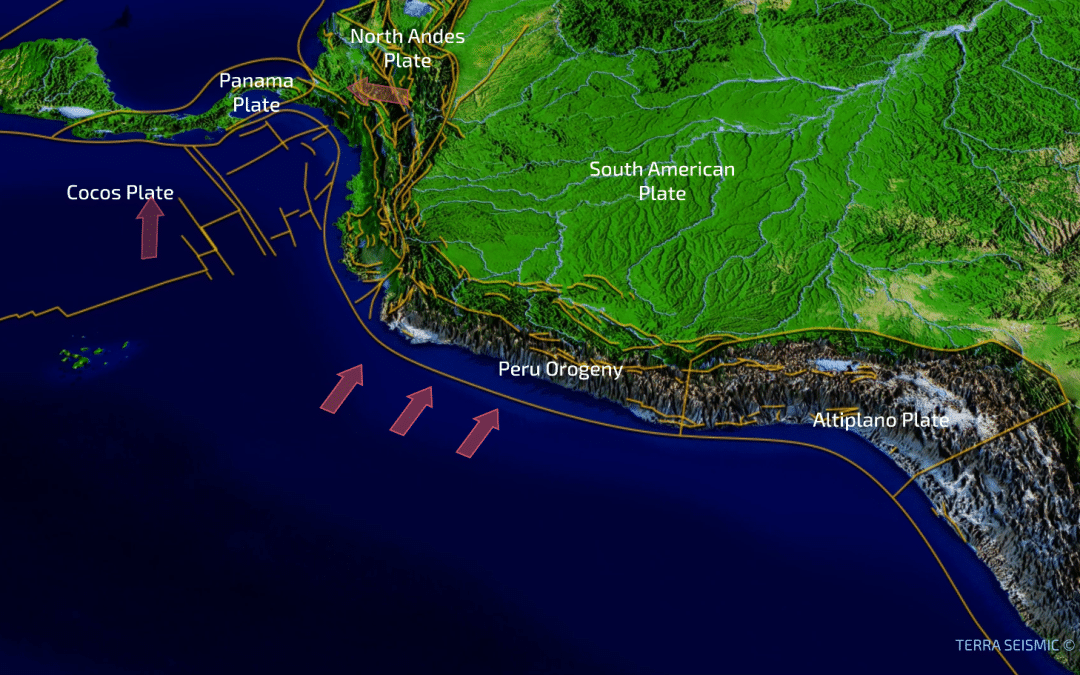Seismicity in Ecuador is heavily influenced by its location along the boundary between the South American Plate and the Nazca Plate. This tectonic setting, involving both subduction and crustal deformation, results in frequent and sometimes very powerful seismic activity. Here are the main factors that define seismicity in Ecuador:
Subduction of the Nazca Plate: The primary source of seismic activity in Ecuador is the subduction of the Nazca Plate beneath the South American Plate. This process creates significant seismic and volcanic activity along the Andean volcanic belt and is capable of producing major earthquakes.
Megathrust Earthquakes: Due to the subduction zone along the coast, Ecuador is prone to large megathrust earthquakes. These are similar to those that occur in other subduction zones around the world and can be very destructive due to their large magnitudes and the extensive areas they affect.
Intraplate and Crustal Earthquakes: Earthquakes also occur within the overriding South American Plate due to internal stresses and localized fault movements. These can be significant and are often felt over large areas.
Volcanic Activity: The subduction process leads to considerable volcanic activity in the Andes, part of the Pacific Ring of Fire. Volcanic earthquakes caused by the movement of magma are common in this region and add to the overall seismic risk.
Complex Geological Structures: The interaction of the Nazca and South American Plates has created complex geological features, including mountain ranges, fault lines, and varied crustal blocks, all of which contribute to Ecuador’s seismic complexity.
Historical Seismicity: Ecuador has a history of destructive earthquakes, such as those in 1987 and 2016, which have significantly impacted the country’s development and disaster preparedness strategies. These events underscore the high seismic risk throughout the region.
Tsunami Risk: Given its coastal location along the Pacific Ocean, Ecuador faces a significant risk of tsunamis generated by offshore earthquakes. The megathrust earthquakes in the subduction zone are particularly capable of triggering tsunamis that can affect not only Ecuador but also distant coastlines across the Pacific.
These factors combine to make Ecuador a region with a high level of seismic activity and risk, requiring continuous monitoring, effective urban planning, and preparedness to mitigate the impacts of future seismic events.

